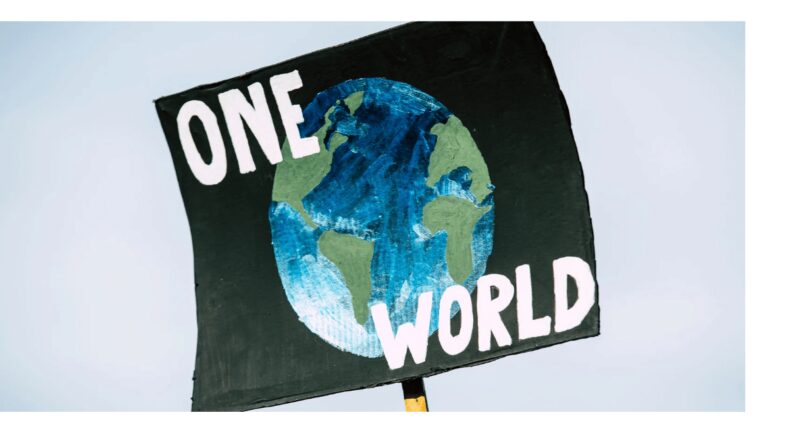There is a substantial amount of information about the connection between the physical damages stemming from natural disasters. But the link between the impact of climate change on mental health is becoming an expanding area of interest.

Communities throughout the world saw dramatic rises in stress, anxiety, depression, and suicidality during the COVID-19 epidemic. There are widespread problems with access to mental health treatments, and billions of dollars have been set aside for better solutions.
But for those remedies to be effective, a thorough understanding of how various elements, including climate change, affect mental health is necessary.
It is obvious how hurricanes, wildfires, and floods affect people’s physical health because they disrupt infrastructure that is utilised to produce food, water, sewage, technology, and medical supplies as well as inflict injury, hospitalisation, and even death.
The effects of catastrophic climate change changes on mental health, especially in children, are less clear.
Trauma and shock might occur when you observe someone you love getting hurt or dying, having their property damaged, or losing your job due to a small business being destroyed. In the first year after a disastrous occurrence, PTSD is present in between 30 and 60% of adult survivors, according to studies. Survivors are susceptible to developing anxiety or depression, even if PTSD does not.
Extreme weather conditions were once thought to be one-time natural disasters from which survivors might recover and rebuild. Communities are frequently suffering extreme events that are challenging to recover from as a result of the intensification of climate change.
The frequency of extreme weather occurrences raises public awareness of climate change. 75% of Americans are concerned about climate change, and 25% are alarmed, according to the American Psychological Association, a number that has risen since 2017.
Climate change is getting worse, and people are becoming more conscious of it, so it’s not just the survivors who are suffering from its consequences on their mental health. Eco-anxiety is a novel phenomenon that first came to light in 2007.
Eco-anxiety is a form of worrying about the future that can make a person feel fearful, angry, helpless, exhausted, stressed, or depressed.
Alternatively, anxiety about the environment or an ecological catastrophe is referred to as eco-anxiety. This sensation of discomfort is mostly based on the condition of the environment today and in the future, as well as climate change caused by humans.
Even if there is disagreement among medical professionals concerning precise terminology, everyone agrees that ambiguity and unpredictability are the main causes of environmental anxiety. And young individuals are more likely to experience eco-anxiety.
Young people may perceive climate change as a bigger danger than older generations do since they have a much more uncertain future. Other factors also come into play; for example, being a woman, not being able to act, and having a strong relation to the land can all exacerbate eco-anxiety.
Social media also has an impact. Social media is now used by everyone, especially youngsters, to learn about climate change. Even if seeing natural disasters online is not the same as experiencing them firsthand, it can nonetheless spark the emergence of eco-anxiety. By acting in a way that actively combats climate change, adults can reassure kids. Participating in activism, having faith in technology, and gaining control over climate change are important mechanisms against eco-anxiety anxiety.
Following the COVID-19 pandemic, enormous sums of money are being spent on mental health, thus any suggested solutions must take emerging problems like eco-anxiety into account. Otherwise, we run the risk of spending money on remedies that don’t cover all mental health issues.
67% of Americans between the ages of 18 and 23 are somewhat too extremely concerned about the influence of climate change on their mental health, which is particularly significant in the domain of youth mental health because care recipients have a higher knowledge of the intersectionality among these professions.
Solution providers should take into account different types of coping behaviours and their related outcomes when working to develop mental health remedies that address eco-anxiety, including for young people. These behaviours include problem-focused coping, emotion-focused coping, and meaning-focused coping.
Making active efforts to combat climate change was a part of problem-focused coping. The main goal of emotion-focused coping is to control the negative feelings brought on by climate change. Meaning-focused coping involves controlling the negative emotions brought on by climate change while also fostering optimistic emotions by curtailing them.
While meaning-focused coping is the most successful in treating eco-anxiety, emotion-focused coping has historically been the most popular tactic adopted by teenagers and young adults. When used effectively, meaning-focused coping techniques, such as participating in campaigns or volunteer work to combat climate change, promote positive feelings like hope without minimising unpleasant ones like anger or fear.
In the end, anxiety is processed, as opposed to becoming entrenched, and a desire to participate in activism, as well as other pro-environmental behaviour, is generated.
This will not only help those who are anxious about climate change, but it will also advance the grassroots environmental movement.
READ MORE
- Diving into Hybrid Skincare: the Fermented ingredients edition
- The expanding purview of EPFO – Pension for all













